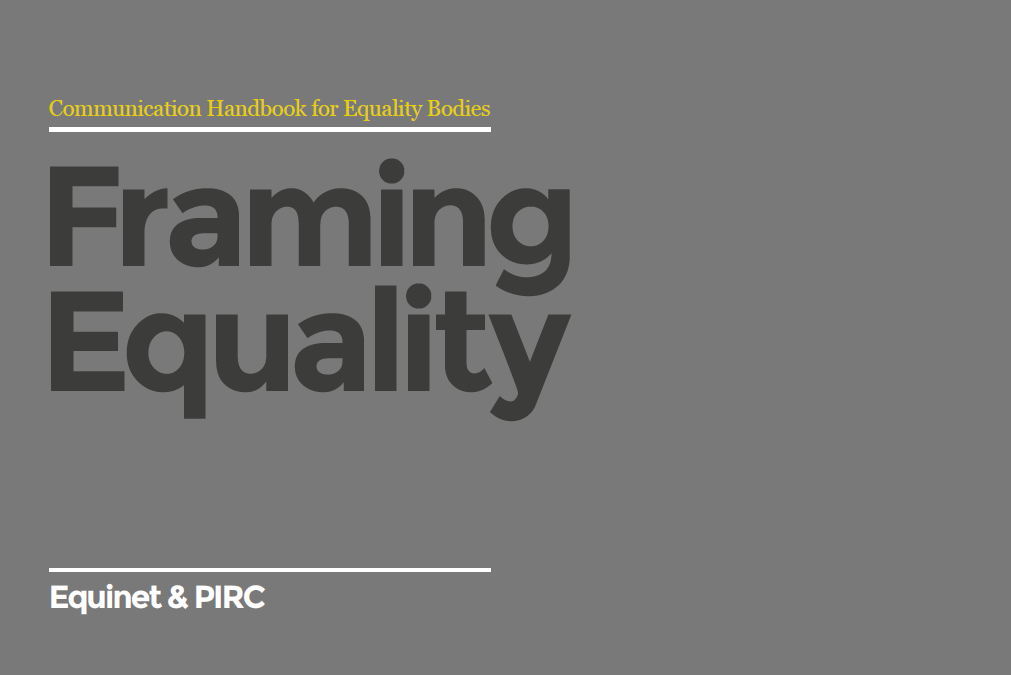Framing Equality: Communication Handbook for Equality Bodies

Cover page

Why do stories matter? What is framing? And how can we create the right messages to talk to a given audience?
’Framing Equality: Communication Handbook for Equality Bodies’ explains the importance of framing – how the stories told interact with our thinking – and explains how to craft our communication to create sustainable social change.
It incorporates research insights, examples and interactive activities to offer a practical and creative guide for your communication.
Background
Equinet and its members believe strongly in the values of equality, social justice, and tolerance and protection for the welfare of all. We promote them in our work on a daily basis.
In 2012 Equinet organised a training event called Tackling Under-Reporting of Discrimination Through Better Communications. It included a workshop facilitated by the Public Interest Research Centre (PIRC), which led to a report entitled Valuing Equality: How equality bodies can use values to create a more equal and accepting Europe.
Both the workshop and the report identified how human values are a key motivator behind people’s concerns about issues such as equality, diversity and human rights. The right communication approach can engage particular positive values, allowing organisations to actively work to ensure that people across Europe are motivated to live in acceptance of one another, free from discrimination, and in peace.
One of the next steps, suggested by the Valuing Equality report, was to create a communication handbook for communicators in equality bodies to analyse and design their own communication with values in mind. This would aim, rather than providing a blueprint for all situations, to give organisations a set of practical tools that can be adapted to their own contexts, alongside examples of best practice.
What is this Communication Handbook?
This suggestion was taken up in our 2017 Work Plan, and Equinet commissioned PIRC to start working on the Handbook. PIRC interviewed the staff members of equality bodies from Croatia, Finland, Germany, Great Britain and Portugal during the summer of 2017. They were told about the campaigns and projects equality bodies are working on, the ‘narrative landscape’ equality bodies see themselves working in and the communication practices they use to develop new ideas. This Handbook aims to provide a snapshot into the shared and distinct communication challenges facing equality communicators and campaigns right now.
We hope this handbook will help address these challenges and highlight some of the successful campaigns happening in the Equinet Network. It is a short guide to strategic communication that builds on the thinking and research of the PIRC team, across a number of projects and years. It aims to provide a framework rather than a blueprint; helping you to ask the right questions rather than giving you the right answers for your communication activities.
Download
Framing Equality: Communication Handbook for Equality Bodies (2017)
Further Reading
For a more indepth look at how to communicate for LGBTI equality, please have a look at ILGA-Europe’s Toolkit. It’s written with a focus on European LGBTI activists, but like ours, could be useful to others with a similar vision.

